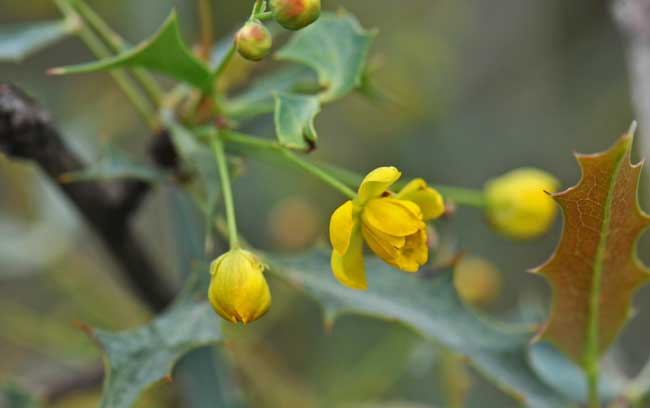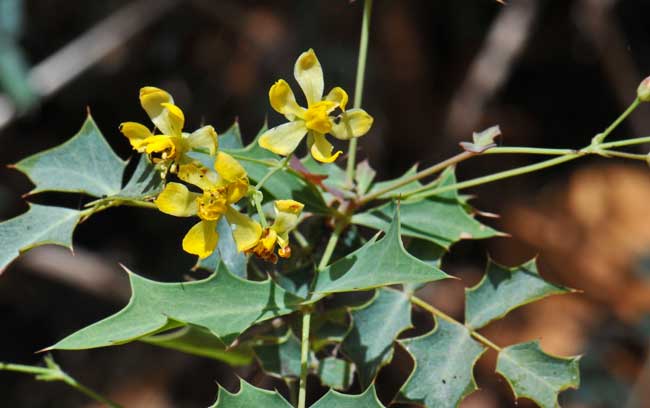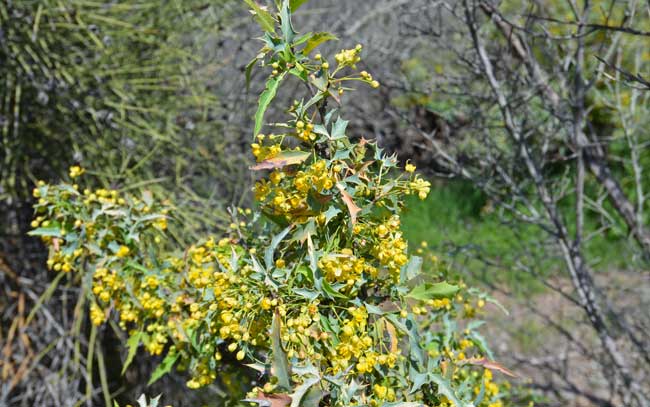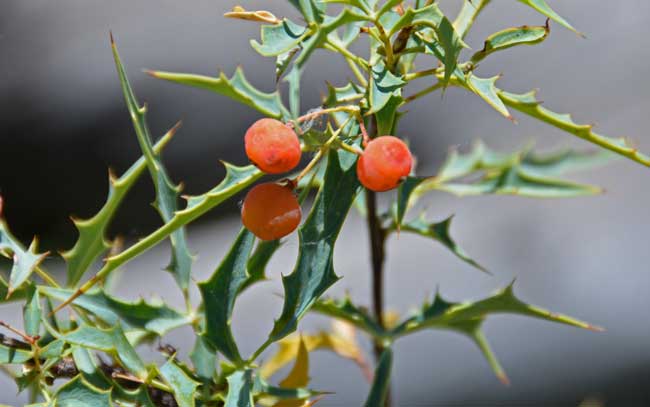Berberis haematocarpa, (Mahonia haematocarpa), Red Barberry




Scientific Name: Berberis haematocarpa
Common Name: Red Barberry
Also Called: Red Mahonia, Bloodberry Barberry (Spanish: Algerita)
Family: Berberidaceae, Barberry Family
Synonyms: (Mahonia haematocarpa)
Status: Native
Duration: Perennial
Size: Up to 12 feet or more.
Growth Form: Shrub or subshrub; stiff erect branches.
Leaves: Dull green; evergreen or deciduous, simply or compound leaves, compound leaflets 3 to 5, spine-tipped teeth, petioles, simply leaves narrowly elliptic or oblanceolate, wavy and folded along midrib.
Flower Color: Yellow; 3 or more flowers (5) from inflorescence in axis internodes, fruit reddish brown or red.
Flowering Season: February to May. Flowers later in California, May to June.
Elevation: 4,500 feet or lower.
Habitat Preferences: Common, usually with scrub oak, pinyon-juniper, wooded areas and other chaparral communities.
Recorded Range: Red Barberry is found in the southwestern United States in CA, AZ, NM, TX, NV and CO.
North America & US County Distribution Map for Berberis haematocarpa.
U.S. Weed Information: No data available.
Invasive/Noxious Weed Information: Berberis haematocarpa (=Mahonia) is listed as a prohibited species by the State of Michigan as Mahonia bushes are subject to attack by black stem rust.
Wetland Indicator: No data available.
Threatened/Endangered Information: No data available.
The Plant List includes 1,022 scientific plant names of species rank for the genus Berberis. Of these 579 are accepted species names.
Comments: Red Barberry is grown commercially in California where it makes an excellent landscape specimen for living fences or just great habitat and food for birds and butterflies. Not readily available in Arizona.
Also see in Southwest Desert Flora; Creeping Barberry, Berberis repens.
Red Barberry has several ethno-botanical uses identified at Native American Ethnobotany, University of Michigan, Dearborn.

